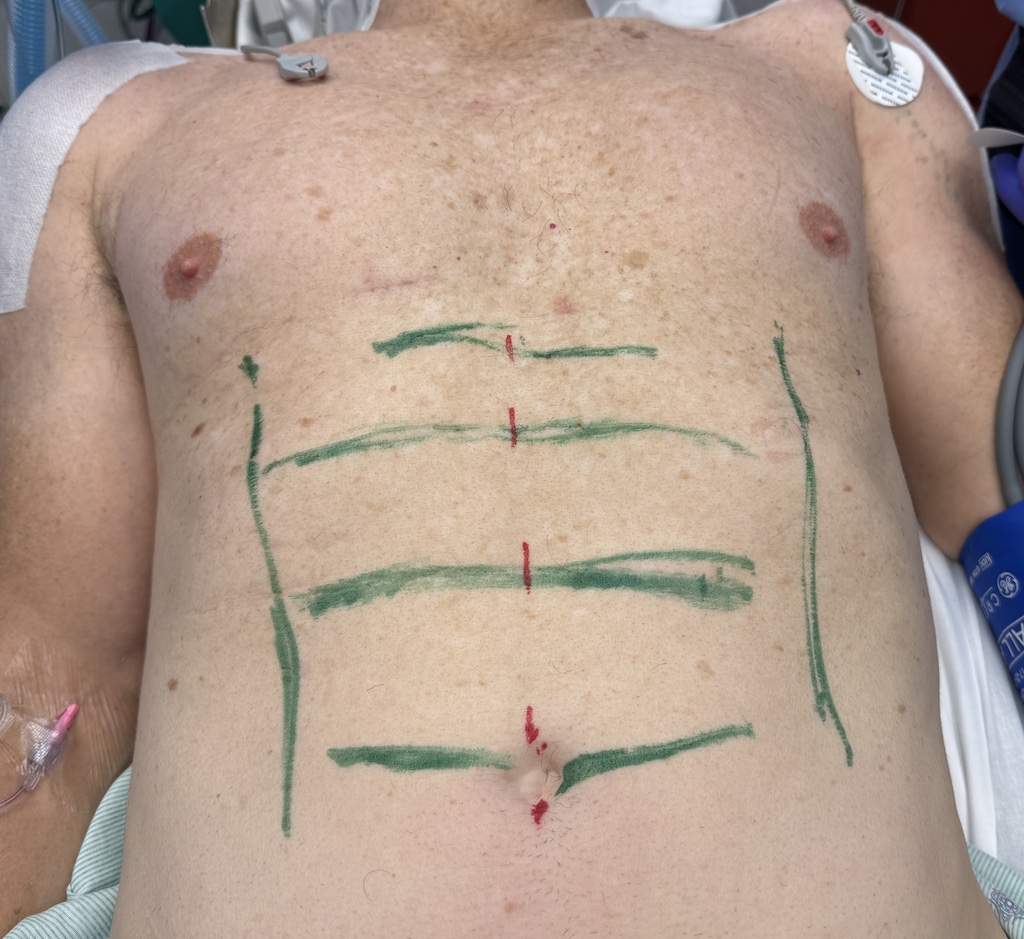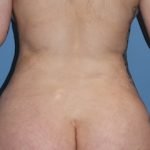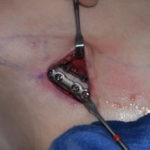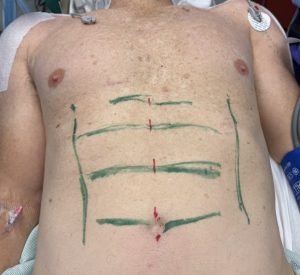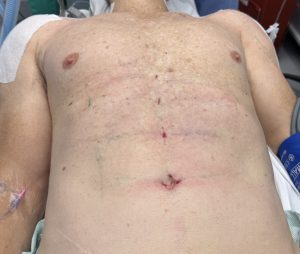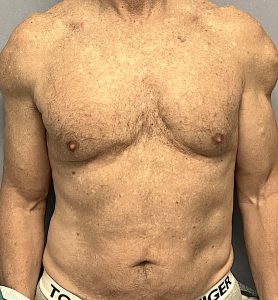Background
One of the core principles of liposuction, unchanged since its introduction in the U.S. in 1981, is to avoid skin irregularities by achieving as even a fat reduction as possible. Abdominal etching, however, is an exception. Instead of uniformly removing fat, targeted linear reductions are performed to mimic the natural horizontal inscriptions of the abdominal muscles and the vertical linea alba. The goal is to deliberately create contour depressions that simulate enhanced muscular definition.
Like all liposuction procedures, the success of abdominal etching depends on the degree of skin retraction. The definition achieved reflects both the amount of fat removed between the skin and muscle fascia, and how well the skin adheres to the newly created troughs. Most abdominal etching procedures are performed on younger patients, who benefit from greater skin elasticity and thus more reliable contraction. This raises the question of whether effective results can also be achieved in older male patients with reduced skin elasticity.
Case Study
A 70-year-old male, already undergoing multiple upper body muscle implant procedures, requested abdominal etching at the same time. He had previously undergone abdominal liposuction without achieving visible results. His goal was to see some improvement in abdominal definition, but he expressed concern about avoiding an overdone or unnatural appearance.
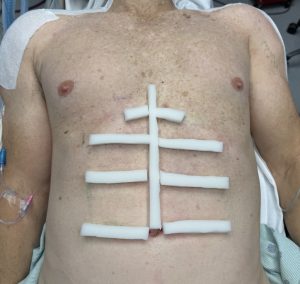
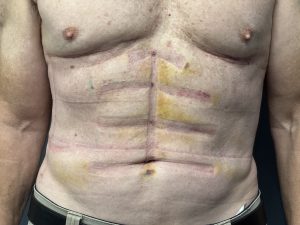
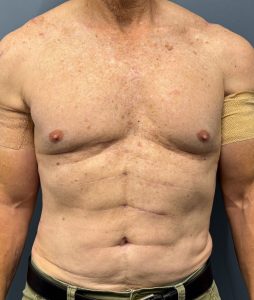
Discussion
Abdominal etching is uncommon in older men, largely because it is best suited to patients with lean body weight and good skin tone. In this case, however, the procedure complemented the patient’s overall body enhancement goals, as he was also undergoing shoulder and arm implants to increase muscular definition. His lifelong maintenance of a healthy weight and absence of stretched or lax abdominal skin contributed to the successful outcome. Despite his age, he achieved visible and natural-appearing abdominal definition.
Key Points
- Abdominal etching, a linear form of liposuction, is most often performed on younger men with good skin elasticity.
- Its effectiveness in older patients is less documented but can be successful under the right circumstances.
- This 70-year-old patient achieved improved abdominal definition alongside multiple muscle implant procedures.
- Overly aggressive fat removal during etching risks creating unnatural results that may be difficult or impossible to correct.
Dr. Barry Eppley
World-Renowned Plastic Surgeon

